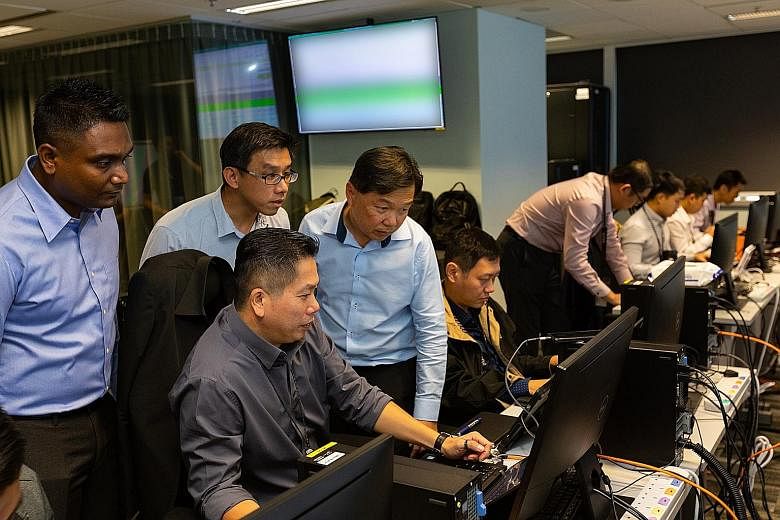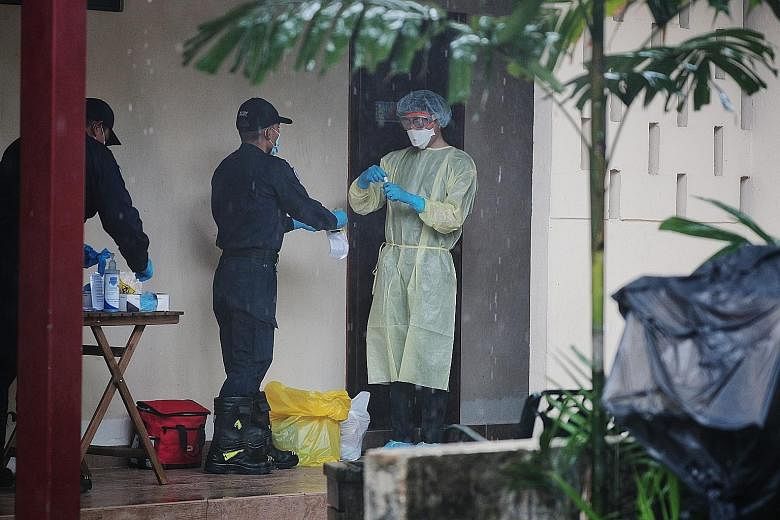Police officers who are trained in investigative work have been tapped to identify links across coronavirus cases which initially seem unrelated as well as trace close contacts of the patients.
This job - on top of their regular crime-fighting duties - is an important part of ring-fencing the virus, by finding people who may have been infected so they can be quarantined or treated if necessary, Home Affairs and Law Minister K. Shanmugam said yesterday.
"When you have someone who is diagnosed as having the illness, you want to be able to trace back to all the people he or she met," he said, adding that this requires a lot of careful investigative work, including tracking the person's movements over a period of time.
"You can imagine that in a place like Singapore with that frequency of movement and the frequency of contacts - a case in any city - that this is not an easy task. So, they are doing it very intensely."
Police officers - working alongside Health Ministry officials - had earlier discovered how a possible new cluster had formed, when the activities of three Singaporean patients and two previous cases - a couple from Wuhan visiting family here - intersected at The Life Church and Missions Singapore in Paya Lebar Road.
It took them about a day to establish the link between the cases via interviews and tapping data sets.
Mr Shanmugam said that in some way, these are the things the officers do in normal investigations.
"The key thing here was to first identify carefully and track the movements, step by step, and then pick out the similarities. It is a lot of painstaking work, as you can imagine, because these are movements over several days to different places," he added.
He was visiting the Criminal Investigation Department (CID) Command Centre at the Police Cantonment Complex, which has been involved in tracing close contacts of the patients as well as uncovering links between cases.
The authorities first interview the patients or their next of kin to gather what they did and who they met in the last 14 days. These activity logs include where the patients ate and with whom, the travel mode or whether they had simply gone out for a stroll.
The information is then analysed for any overlaps between cases.
Deputy Assistant Commissioner Deculan Goh, assistant director of the Specialised Crime Division at CID, said: "Although we are doing this on top of our regular crime-fighting duties, our officers are stepping up and putting in extra hours to support the national response to the coronavirus outbreak."
Mr Shanmugam also visited a government quarantine facility at the National Community Leadership Institute in Buona Vista yesterday, where a team from the Singapore Civil Defence Force took swabs of people quarantined there.
Swab tests are conducted when quarantined persons first arrive at the facility to test for any early signs of the coronavirus. Those who are soon to be released from their quarantine undergo swabbing again to ensure they are free of the virus.
Asked about safeguards taken by front-line officers, Mr Shanmugam said this will depend on the work they do and the risks they face.
"The key thing is to emphasise to all of them how risky it is to put your hands to your face," he said.
"You are touching things, and then you are bringing your hands to your face. This is instinctive.
"Studies have shown that each of us touches our face once in every two minutes on average, and that is how one gets it. So, you have to really keep your hands clean.
"That has got to be emphasised to our officers, and depending on what they are doing, we need to make sure that they are adequately protected."












